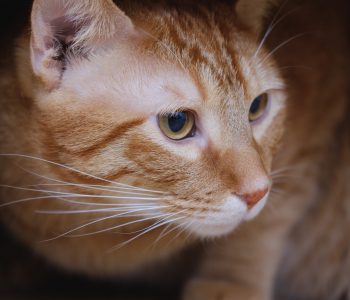What Is TNR (Trap-Neuter-Return)?
Trap-Neuter-Return (TNR) has proven to be the only humane and effective method of managing the community cat population.
How It Works
During TNR, cats are humanely trapped, taken to a veterinarian where they are vaccinated, neutered or spayed, and ear-tipped (a procedure where 3/8” is taken off of the left ear as a universal sign the cat that has been sterilized and vaccinated), and then returned to their outdoor home. These cats are also given an overall health checkup and any cats that are sick and/or injured will be treated and an assessment will be made at to whether they should be returned to their outdoor home. Therefore, only cats that are healthy and thriving will be returned to their outdoor home.
Why It Works
The cat population is immediately stabilized once TNR starts and reproduction stops. The cat’s behavior is modified and the fighting, clawing of property, and spraying is minimized. This will lead to nuisance calls drastically reducing.
Community cats, sometimes also known as stray or feral cats, often live in groups called colonies. The colonies often have dedicated caretakers who provide food and outdoor shelters for cats and monitor their overall wellbeing. A successful TNR program allows shelters and animal control officers to build relationships with these caregivers in order to communicate concerns, offer resources, and successfully mitigate neighbor disputes.
What Does NOT Work
Trapping community cats and transporting to shelters has proven to be ineffective over the years because it just leads to needless euthanasia and does not address the reproduction cycle of cats. Community cats are not adoption candidates, even the ones that may seem to be socialized. Once taken into a shelter, their behavior deteriorates rapidly because they do not want to be confined and they were happier in their outdoor home surrounded by their outdoor family and caregivers. If they are not returned, the only option is euthanasia. That means that a healthy and thriving cat will be killed for no reason whatsoever.


What the Public Wants
The larger public does NOT wish to see community cats rounded up and killed. Thus, if TNR is not available and the only option is the round-up of cats for euthanasia, most residents will choose to do nothing, which further contributes to community cat population growth. TNR is the only humane and effective solution. Killing is not only inhumane, but ineffective and a waste of funds. So many localities in VA, as well as across the country, have implemented TNR and have been very successful.

The Proof
- The 2016 study, “Association between a shelter-neuter-return program and cat health at a large municipal animal shelter” analyzed eight years of data from San Jose Animal Care and Control in California. It determined that the implementation of a Shelter-Neuter-Return program reduced both cat intake and cat euthanasia. Furthermore, financial resources previously spent on cat euthanasia were reallocated to provide medical care to cats with URI.[1]
- An eleven year study of community cats at the University of Central Florida campus determined that the campus cat population decreased by 85% after a TNR program was instituted. [2]For years, the campus had unsuccessfully attempted to reduce the population through lethal control.
- A 2002 study at Texas A&M University found a 36% reduction in the community cat population coupled with a decrease in nuisance complaints only two years after TNR was introduced.[3]
- On the other hand, attempts at lethal control of community cats can worsen the problem. A 2014 study on the effects of trapping-and-killing on two cat colonies in Tasmania found significant increases in the cat population. Researchers found a 75% increase in population at one site while the second site’s population increased by 211%. Researchers theorized that the increase in population was due to new cats moving into the areas and an increased survival rate for the kittens born to remaining cats.[4]
- A targeted TNR campaign was conducted by the Haywood Animal Welfare Association in conjunction with Haywood County Animal Shelter from July 1, 2010 through December 31, 2012. They targeted Haywood County, NC which spans 555 square miles. Through the campaign, 1,226 cats went through TNR. During the period of the study, the Haywood County Animal Shelter saw their cat intake drop by 29% and their cat euthanasia rate drop by 41%. [5]
Sources:
[1] Edinboro, C, Watson, H, Fairbrother, A. (2016) “Association between a shelter-neuter-return program and cat health at a large municipal animal shelter.” Journal of the American Veterinary Medical Association 248, no.3:298-308.
[2] Levy, J.K., Gale, D.W., and Gale, L.A. (2003). Evaluation of the effect of a long-term trap-neuter-return and adoption program on a free-roaming cat population. Journal of the American Veterinary Medical Association 222, 42-46.
[3] Hughes, K.L. and Slater, M.R. (2002). Implementation of a feral cat management program on a university campus. Journal of Applied Animal Welfare Science, 5, 15-28.
[4] Lazenby, B.T., Mooney, N.J., and Dickman, C.R. (2014). Effects of low-level culling of feral cats in open populations: a case study from the forests of southern Tasmania. Wildlife Research, 41, 401-420.
[5] New York City Feral Cat Initiative; Neighborhood Cats; and Loudoun Community Cat Coalition (VA); The National Animal Care and Control Association’s Extended Animal Care & Control Concerns – Community Cat Management